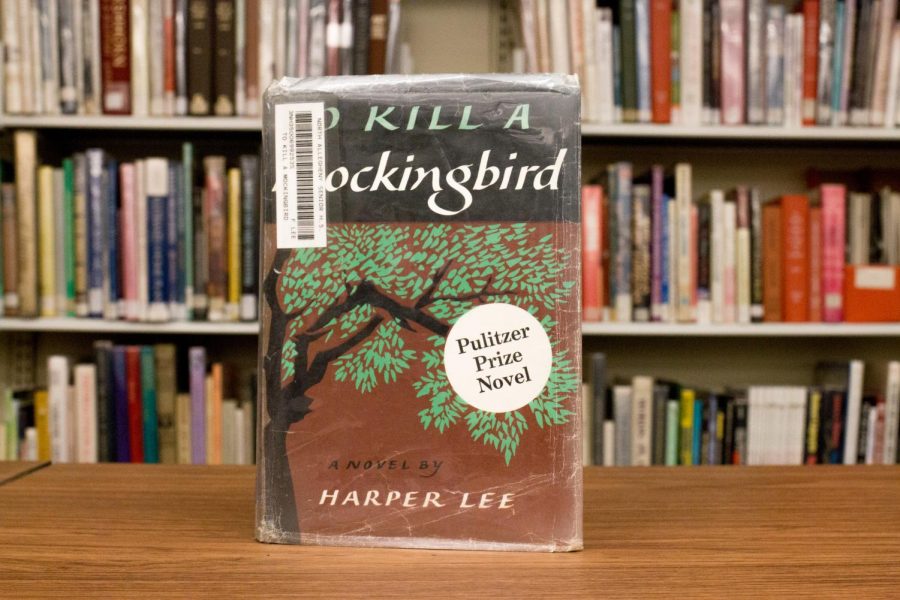Banned Book Club: To Kill A Mockingbird
November 1, 2018
As discussed in last month’s banned book week article, books can be challenged by school boards, administrators, and concerned parent groups for a variety of reasons. This month we take a close look at To Kill A Mockingbird, among the most commonly banned books. This book is often challenged due to its talk of sexual assault, discussions of sexuality, and use of racial slang. Yet the book is widely regarded as a classic.
To Kill A Mockingbird is book that a majority of us have already read, but a quick plot recap might help. Jean Louise “Scout” Finch is a girl growing in up in Maycomb County, Alabama, a very open-door, close-knit community, in the midst of the Great Depression. She lives with her brother, Jem, and father, Atticus, who is a lawyer, which allows the family a more financially stable lifestyle; nevertheless, they are still very much affected by the Depression. Growing up in this setting would be tough on anyone, especially as the beginnings of African-American and Women’s rights movements were stirring.
During the summer, they are joined by a boy of about their same age, Dill. Being the only kids in the immediate area, all Scout, Jem, and Dill are in a constant need of new ways to entertain themselves. Some of their methods include reenacting plays, making up stories, role-playing as their mysterious neighbors, the Radley family, and occasionally something scandalous like strip-poker. It’s important to clear up that they didn’t actually play strip-poker, but used it as an excuse when they had done something they probably shouldn’t have.
Having lost her mother at a young age, Scout is mostly left to her own devices finding her way in the world. The few feminine figures in her life are either too distant or is someone like Calpurnia, the Finch family’s African-American cook/maid, who isn’t socially acceptable to teach a young, impressionable white girl. As Scout is the main character and narrator of the book, we see much of her development. Jem is constantly reminding us of this as he tells Scout, “You’re turning into a girl more and more every day,” which adds to her ever-shifting world views.
The book presents many deep themes, some of which are hard to pick up on as a first-time reader in 9th grade. For example, in a portion of the book, Jem builds a snowman. There is not a whole lot of snow during an Alabama winter, so he builds it out of dirt and packs the little amount of snow around the outside. This is seen by many to be an allegory for race, in the sense that the time period’s thoughts on race had such a lack of depth.
It’s also important to pay attention to what this time period entailed. Calpurnia wasn’t actually a slave. In the context of others in her position, she is very well off and respected by many, as seen when she is with her church community. Also, the aforementioned Radley family seems unusual in the context of the ‘20s, but by today’s standards, many families don’t leave their doors open or spend days outside exploring their neighborhood.
All in all, To Kill A Mockingbird is a valuable part of a high school education — unless schools ban access to it. Although some believe it may not be appropriate, showing kids the ignorance and anger that underlie racist beliefs keeps our society from taking a u-turn back to the Jim Crow era.
November is a very exciting month. The next banned book is 1984 by George Orwell. Read along if you’re inclined, and be sure to return next month for the review and discussion. November is the perfect month to jump on the banned book train, since we have so many breaks. And let’s be honest, you’re going to need an escape from the people at Thanksgiving dinner at some point.













The Creature • Nov 8, 2018 at 7:33 pm
It is ridiculous that such great books can be banned. Highschool students shouldn’t be so coddled. In fact, it is a disadvantage for young men and woman not to be exposed to such influential and ground-breaking books such as this beauty, and 1984?? Don’t even get me started. That book changed my life. Keep up the great work, Roman!